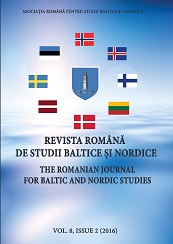Representations of political power in medieval Iceland: Íslendingabók
Representations of political power in medieval Iceland: Íslendingabók
Author(s): Costel CorobanSubject(s): Politics / Political Sciences, History, Social Sciences, Language and Literature Studies, Literary Texts
Published by: Asociatia Romana pentru Studii Baltice si Nordice
Keywords: medieval Iceland; power; ideology; Bishop Gizzur; Ari froði
Summary/Abstract: This paper aims to analyse emblematic sources from the Golden Age of literature in High Medieval Iceland, such as Íslendingabók, from the point of view of the ideology of power, in order to compare the findings to those from other sources of the time. If in Norway towards the 13th century all power gravitated around the person of the King and the institution of the court, in Iceland the political situation from the assembly of the Alþingi in 930 up to the country’s annexation (1262) was wholly different, owing to the different political organization of the Old Icelandic Commonwealth (Þjóðveldið). The Icelandic political milieu has not been researched very extensively from the point of view of political ideology, as one of the pioneers of this approach, Jón Viðar Sigurðsson noted. There is much to be said on the subject of the worthiness of the Icelandic Family sagas as useful in describing the political ideology of power due to their role as both historical and literary sources. These skaldic texts were sponsored with specific purposes by rulers who understood how songs and stories could improve a leader’s position and prestige. As a similarity to the literature sponsored by the kings of Norway, the texts created in Iceland during the literary miracle of the Middle Ages had a greater importance for those chieftains who did not enjoy a strong position, who were either attempting to legitimate themselves as rulers of newly usurped positions, or who were threatened by stronger neighbouring rulers.
Journal: Revista Română de Studii Baltice şi Nordice
- Issue Year: 8/2016
- Issue No: 2
- Page Range: 7-24
- Page Count: 18
- Language: English, Romanian

